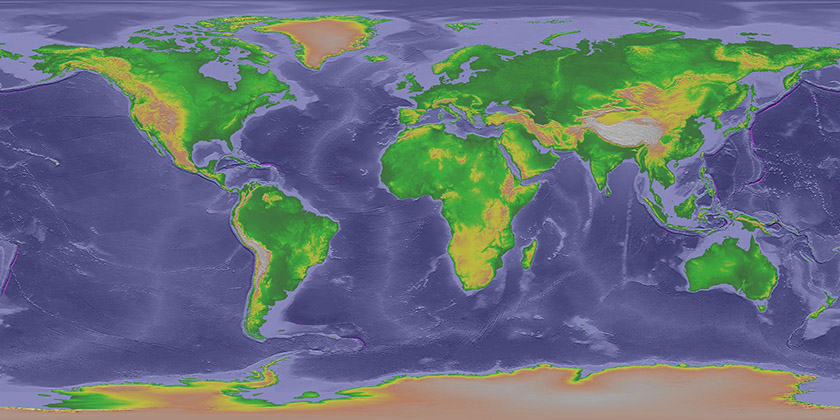
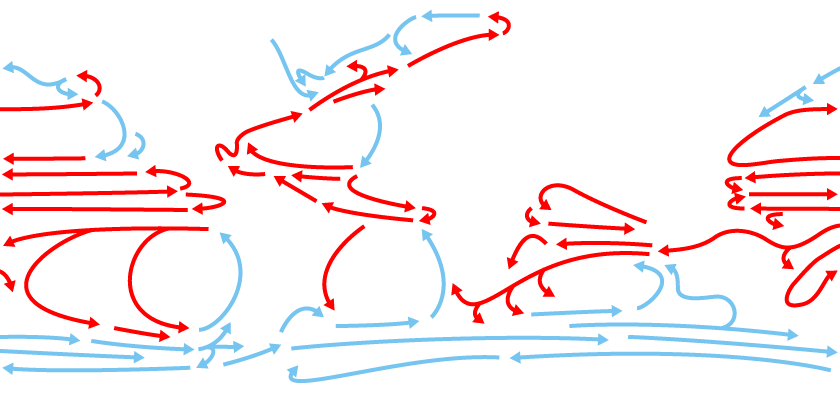








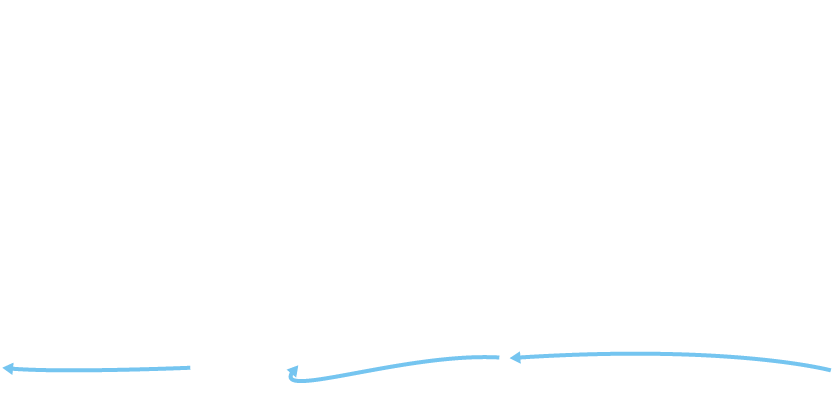
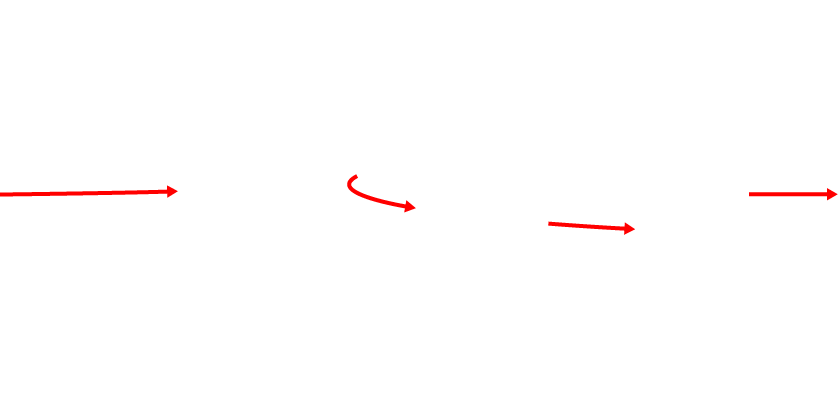




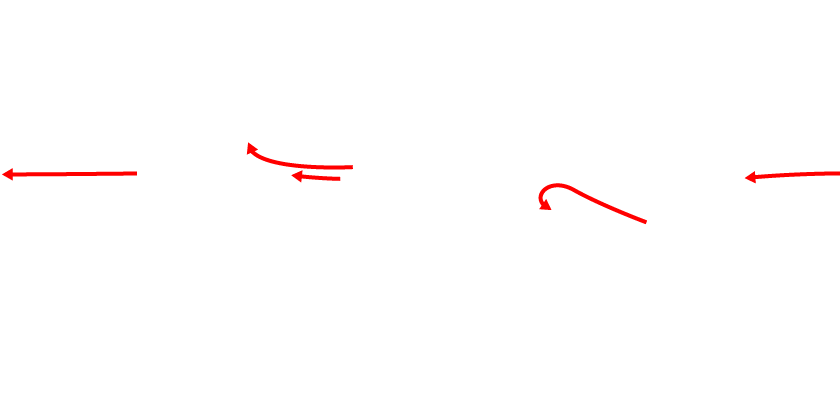

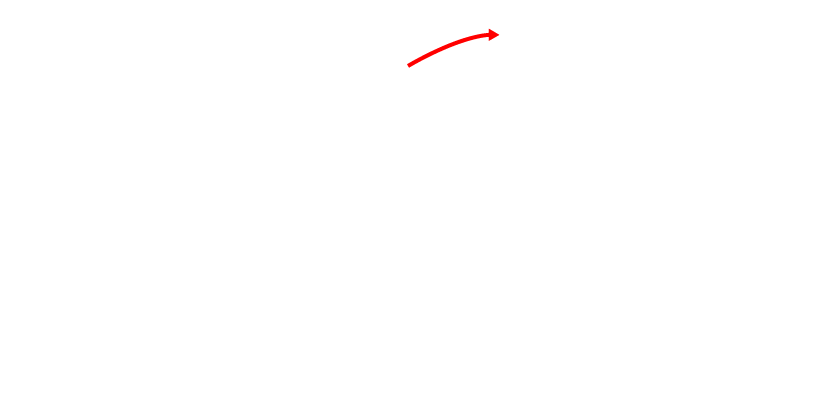





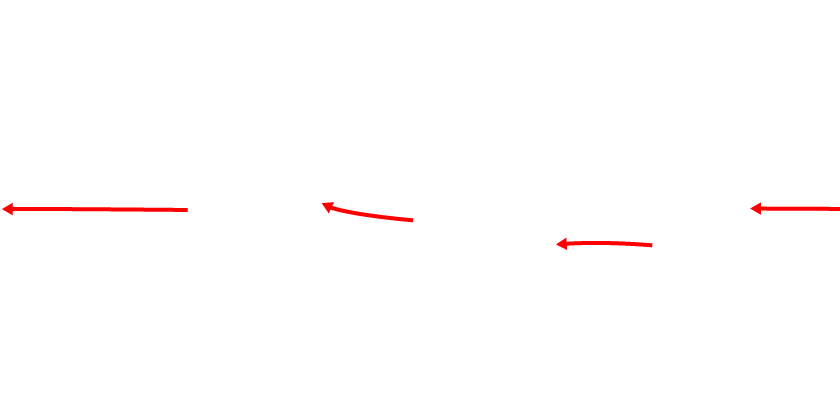
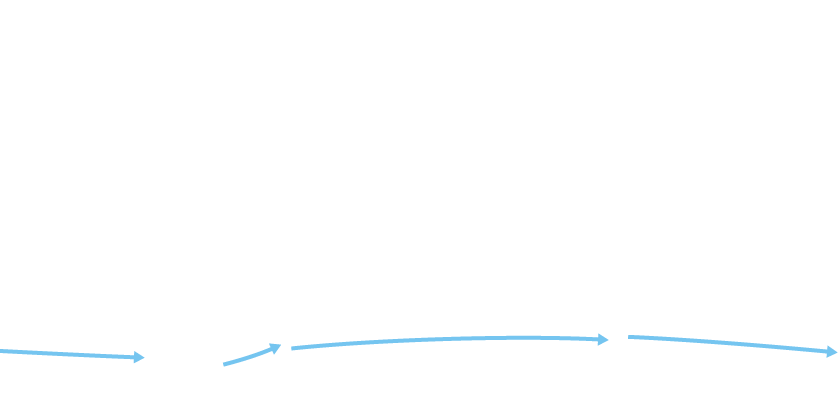

This image will help identify the top 25 of the world's wind driven ocean currents. To view each current individually, uncheck the "All Currents" box, then check the box for each of the individual currents. Currents indicated by the red color are considered "warm" currents as they transport warm water (and heat) toward the poles. The blue colored currents indicate they transport cold water toward the equator.
One set of currents that are not directly related to the wind are the "counter" currents. Like the name implies, these currents run counter to the prevailing wind direction but usually only in regions where the winds are weak. These currents are located along the equator and are a result of the water returning east after it was pushed west by the equatorial currents.
The reason for their motion "counter" (opposite) to the wind flow is because the northern and southern equatorial currents, pushed westward by the trade winds, pile up water in the western portion of each ocean basin. This results in a sea surface is about 0.5 meter (18 inches) higher in the western Pacific near Indonesia than it is in the eastern Pacific near South America.
Because of the pile of water, gravity causes it to flow back eastward across the ocean basin in the area where the winds are weak, which is along the equator. The same is true for the coast of Antarctica as well with the East Wind Drift current.


